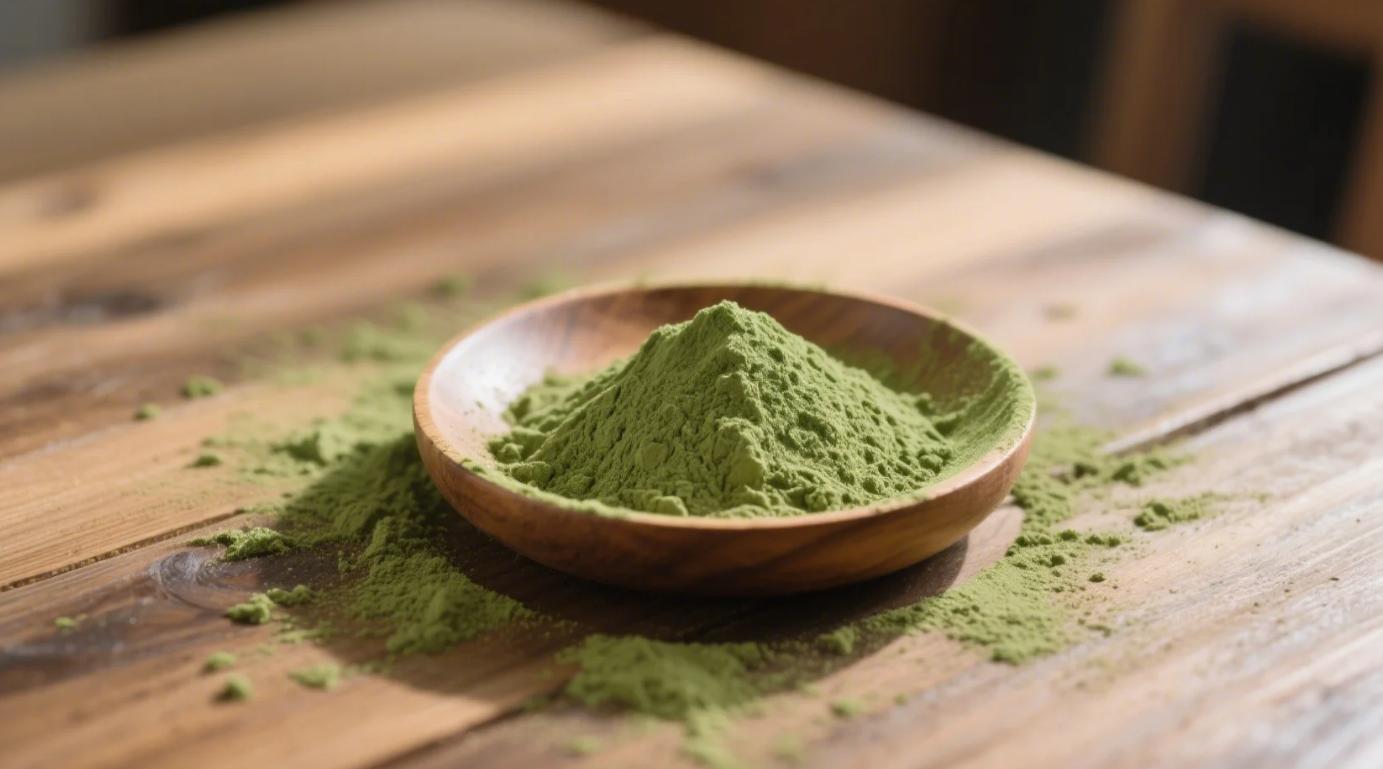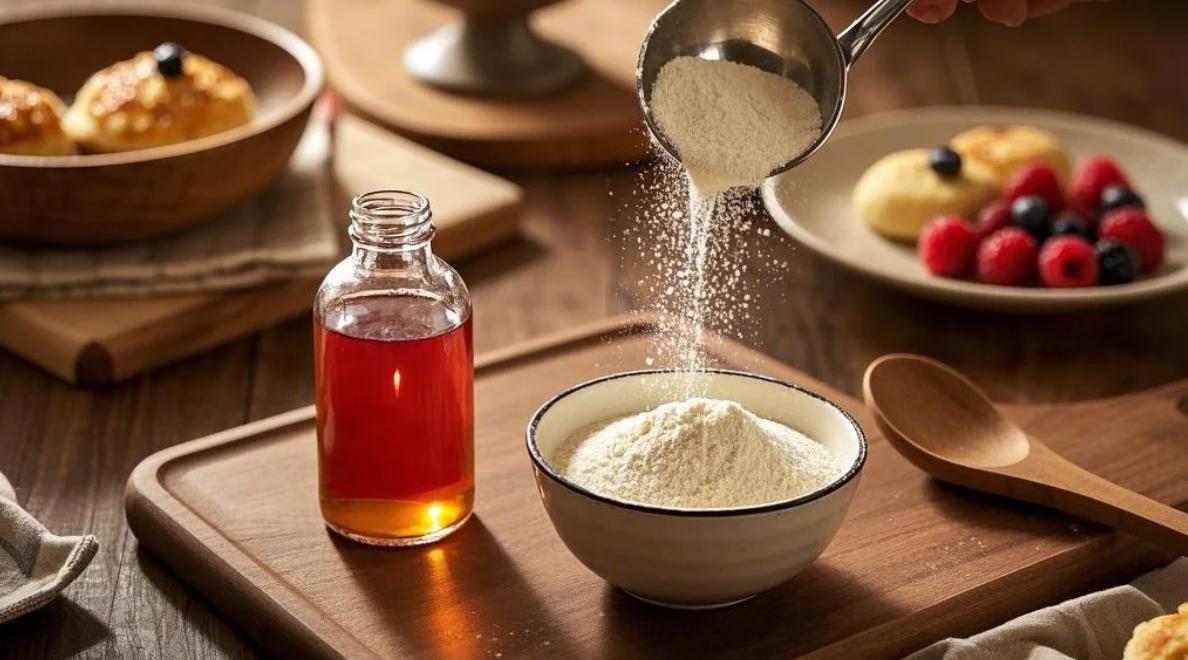Table of Contents
Celebrated as a wellness panacea, organic matcha has transcended its Japanese tea ceremony roots to become a global phenomenon. With 78% of millennials sipping matcha lattes for “clean energy,” this vibrant green powder is lauded for its antioxidants, metabolism-boosting properties, and mental clarity benefits. Yet, beneath its emerald allure lie underdiscussed risks—from caffeine overload to heavy metal contamination. Let’s dissect matcha’s dual nature, empowering you to enjoy its perks without compromise.

1. The Bright Side: Science-Backed Benefits of Organic Matcha
A. Antioxidant Powerhouse
Matcha contains 137x more EGCG (epigallocatechin gallate) than regular green tea, a potent antioxidant linked to:
- Cancer Prevention: Reduces free radical damage by 31% in high-risk groups (NIH, 2024).
- Skin Health: Topical matcha serums block UV-induced collagen breakdown by 44% (Journal of Dermatology, 2025).
B. Cognitive & Metabolic Boost
- L-Theanine Synergy: This amino acid, unique to shade-grown matcha, induces alpha brain waves for laser focus without jitters. A 2025 Stanford study found matcha outperformed coffee in sustaining attention during 4-hour work sprints.
- Fat Oxidation: Daily consumption elevates metabolic rate by 17%, aiding weight loss when paired with exercise.
C. Sustainable Wellness
Certified organic matcha from regions like Uji, Japan, supports regenerative farming practices that sequester 2.3kg CO₂ per kg produced.
2. The Hidden Downsides: Risks You Can’t Ignore
A. Caffeine Overload & Sensitivity
- High Stimulant Content: One teaspoon (2g) of matcha packs 70mg caffeine—equivalent to a shot of espresso. Overconsumption (>3 servings/day) triggers:
- Anxiety/insomnia in 34% of users (Mayo Clinic survey, 2024).
- Elevated heart rate and adrenal fatigue in caffeine-sensitive individuals.
- Solution: Opt for ceremonial-grade matcha (lower caffeine than culinary grades) and avoid post-2pm consumption.
B. Heavy Metal Contamination
- Lead & Aluminum Exposure: Non-organic matcha grown near industrial zones absorbs heavy metals. A 2025 Consumer Reports test found 22% of US-market matcha exceeded FDA lead limits.
- Solution: Choose USDA/EU-certified organic brands that publish third-party heavy metal tests (e.g., Encha, Ippodo).
C. Nutrient Depletion Risks
- Iron Absorption Blockers: Matcha’s tannins inhibit non-heme iron uptake by 39%, per a 2024 Nutrition Journal study. At-risk groups:
- Vegans/vegetarians.
- Women with heavy menstrual cycles.
- Solution: Consume matcha 2+ hours apart from iron-rich meals or supplements.
D. Drug Interactions
- Blood Thinners: Matcha’s vitamin K content (1.5mcg/g) may interfere with warfarin efficacy.
- Stimulants: Combining with ADHD medications (e.g., Adderall) exacerbates heart rate spikes.
- Solution: Consult a physician if taking antidepressants, anticoagulants, or stimulants.
E. Digestive Discomfort
- Tannin-Induced Issues: High intake irritates the gut lining, causing nausea or acid reflux in 18% of users.
- Solution: Pair matcha with oat milk (neutralizes acidity) or choose sun-grown varieties (lower tannins).
3. Who Should Avoid Matcha?
- Pregnant/Nursing Women: Caffeine crosses the placenta; limit to 1/2 tsp daily.
- Hypertension Patients: May exacerbate blood pressure spikes.
- Autoimmune Disorders: EGCG can overstimulate immune activity in active lupus or RA flares.
- Kidney Issues: High oxalate content risks stone formation in predisposed individuals.
4. Smart Consumption: Maximizing Benefits, Minimizing Risks
- Dosage: Stick to 1–2 tsp (2–4g) daily, ideally before noon.
- Quality Checks:
- Color: Vibrant jade green (avoid yellowish or dull hues).
- Origin: Japanese Uji/Nishio regions (strict pesticide regulations).
- Certifications: USDA Organic, JAS, EU Organic.
- Detox Pairings: Chlorella or cilantro smoothies help chelate heavy metals.
5. The Future of Matcha: Innovation Meets Caution
- Lab-Grown Matcha: Startups like GreenBio use cellular agriculture to produce heavy metal-free matcha, slated for 2027 release.
- Decaf Innovations: Cold-pressed, caffeine-reduced matcha retains 90% EGCG (trials ongoing).
The Final Word
Organic matcha is neither a miracle nor a menace—it’s a nuanced superfood demanding respect. While its antioxidants and cognitive perks are transformative, mindful consumption is non-negotiable. By prioritizing quality, moderating intake, and understanding your body’s limits, you can harness matcha’s green magic safely. As the wellness world evolves, let your matcha ritual be one of balance, not blind trend-chasing.

